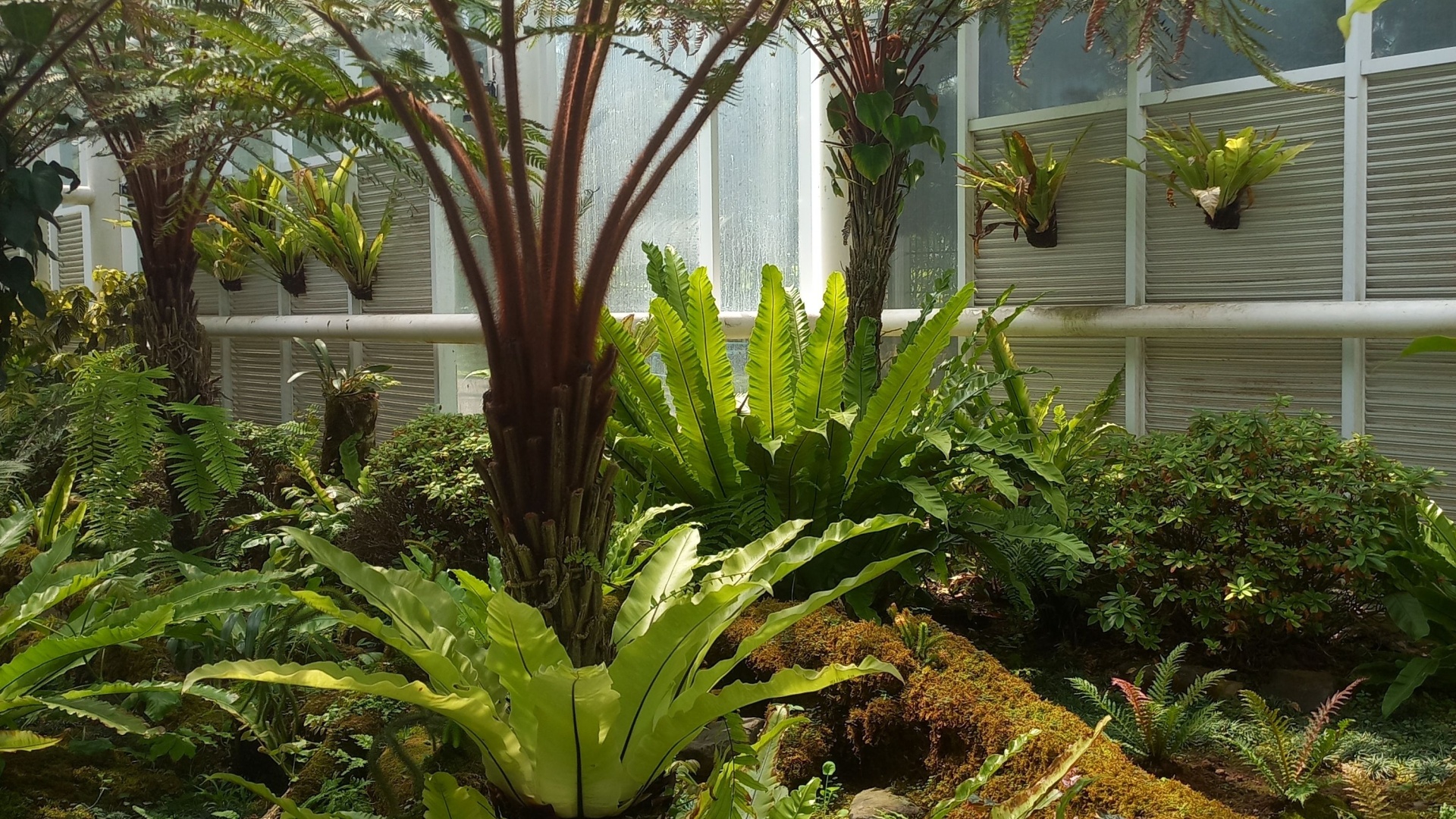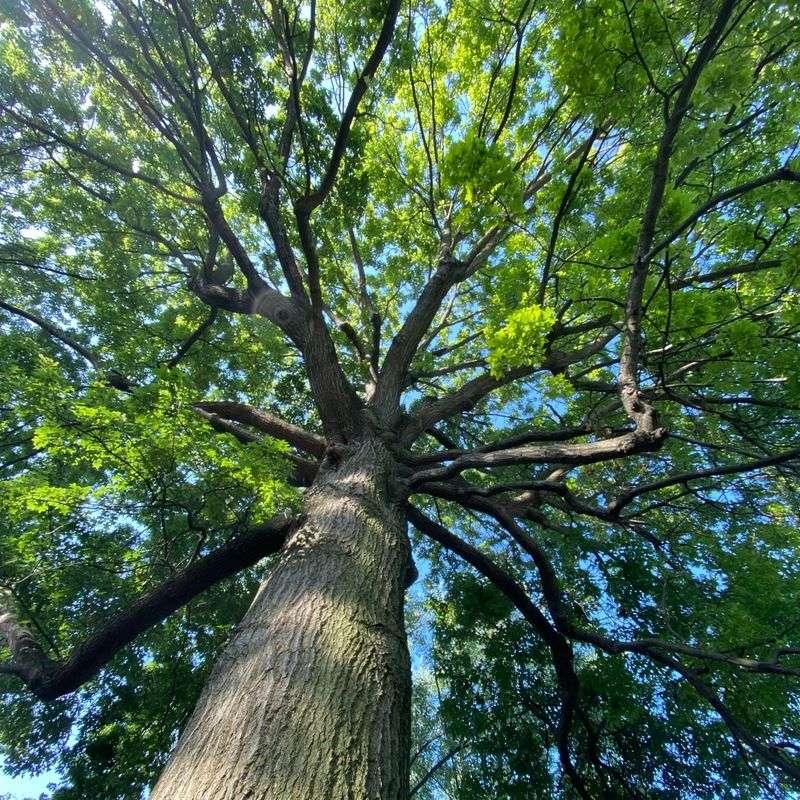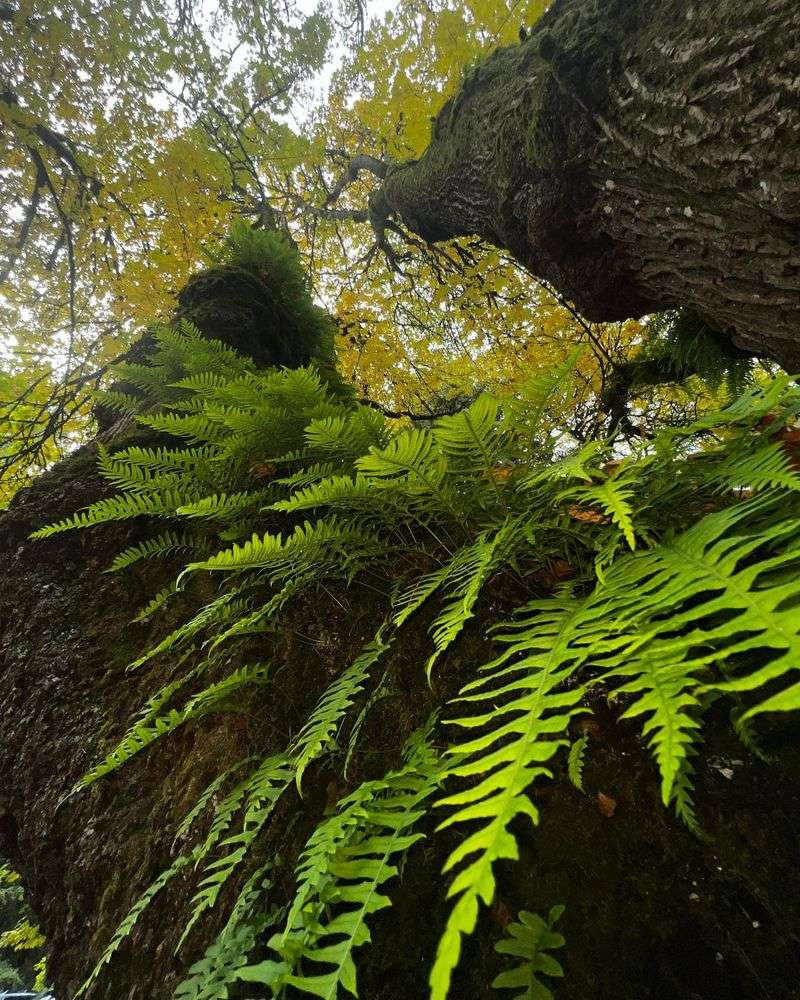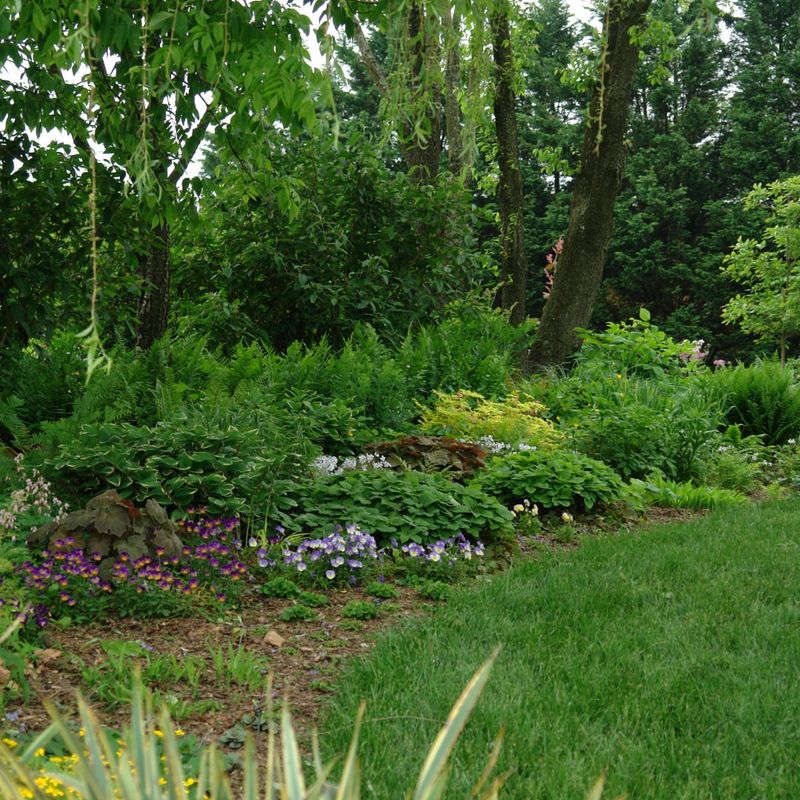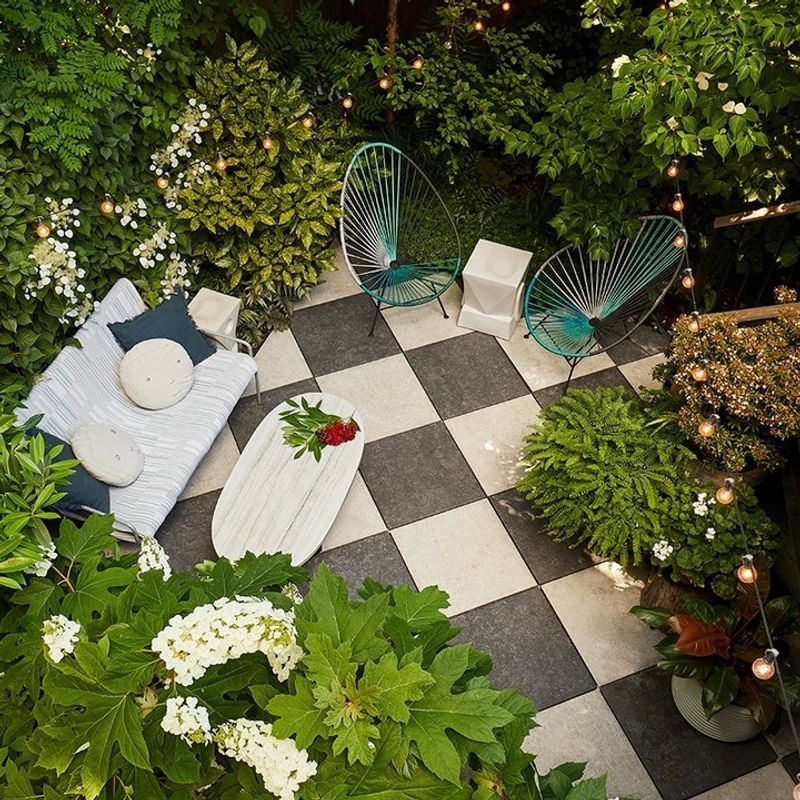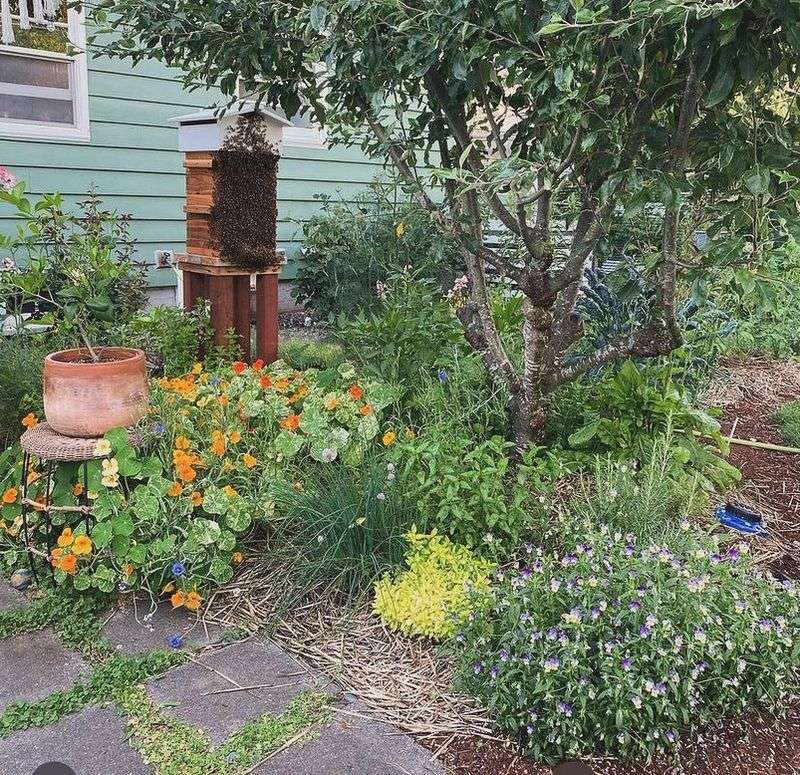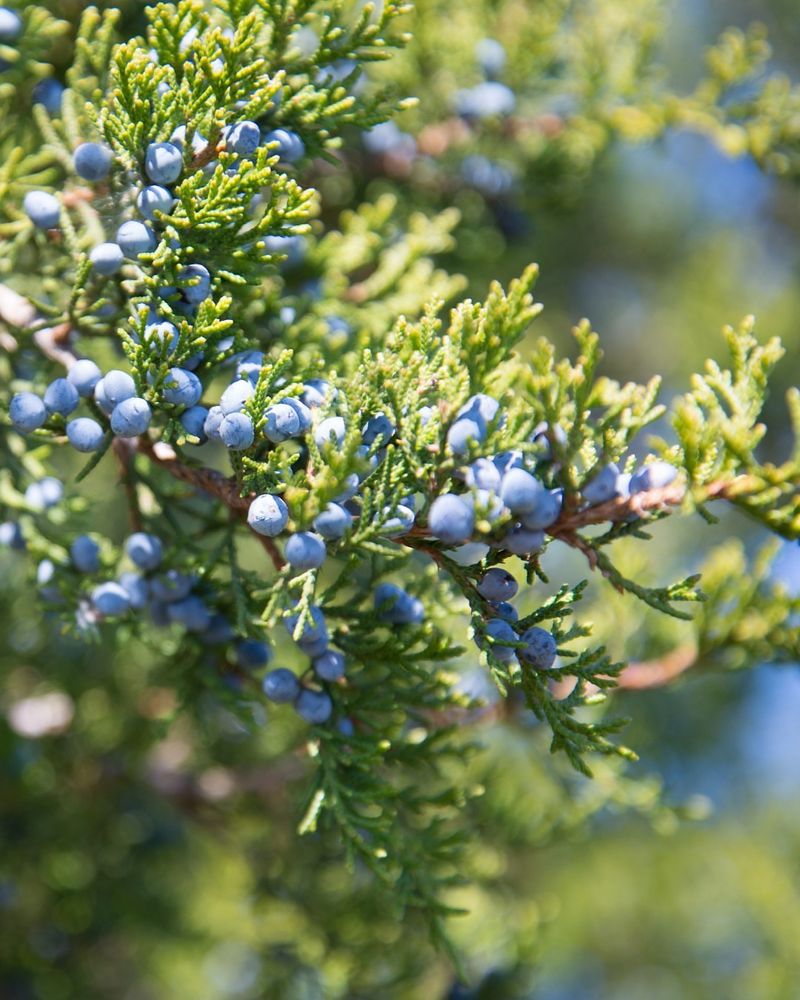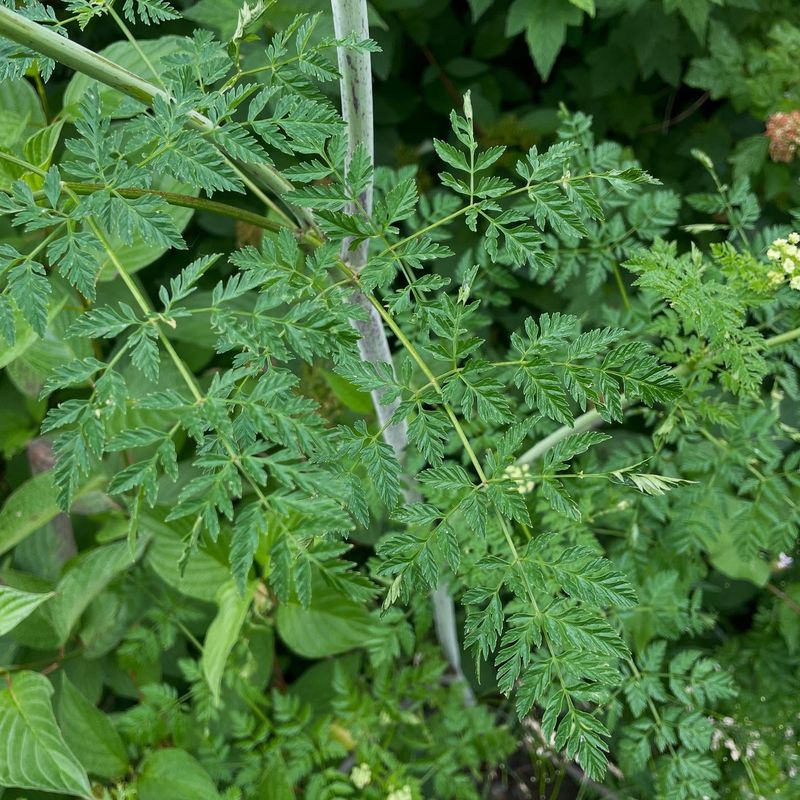Detroit gardens can be transformed into thriving micro forests with the right combination of shade trees and fern layers. Creating these mini ecosystems helps cool urban areas, supports local wildlife, and brings a piece of natural woodland right to your doorstep.
By mimicking natural forest layers, you can build a sustainable garden that practically takes care of itself.
1. Native Oak and Maple Canopy
Red oaks and sugar maples form perfect upper canopies for Detroit micro forests. These native giants provide essential shade while their deep roots help prevent soil erosion during Michigan’s wet seasons.
Plant them at the north end of your garden to maximize sun exposure for plants beneath. As they mature, these magnificent trees create the microclimate needed for delicate ferns to thrive without excessive watering.
2. Layered Fern Gardens Under Existing Trees
Got mature trees already? Lucky you! Start your micro forest by planting various fern species beneath them. Christmas ferns and lady ferns thrive in Detroit’s climate and soil conditions.
Mix different heights and textures for a natural woodland feel. The best part? Once established, these ferns need minimal maintenance and return year after year, gradually spreading to create lush ground cover that suppresses weeds naturally.
3. Rain Garden Integration with Shade-Loving Plants
Detroit’s occasional heavy downpours make rain gardens practical and beautiful. Carve a gentle depression where water naturally collects, then plant moisture-loving ferns like cinnamon fern alongside shade trees.
Add native woodland flowers such as trillium and jack-in-the-pulpit for spring color. This approach manages stormwater runoff while creating diverse habitat layers. The varying root depths help filter water as it recharges groundwater supplies.
4. Urban Hedgerow with Understory Plantings
Transform your property boundary into a multi-layered micro forest! Plant serviceberry or American hazelnut as a mid-height layer, then add shade-tolerant trees like pawpaw behind them.
Beneath these woody plants, establish colonies of maidenhair ferns and wood ferns. The result? A privacy screen that doubles as wildlife habitat. Birds nest in the shrubs, beneficial insects overwinter in fallen leaves, and you enjoy changing seasonal interest year-round.
5. Pocket Woodland with Edible Elements
Who says micro forests can’t feed you? Plant paw paw trees or serviceberries as your shade canopy – both produce delicious fruits and grow well in Detroit’s climate.
Beneath them, establish ostrich ferns, whose fiddleheads are a spring delicacy when properly harvested and prepared. Add woodland strawberries as ground cover between fern clumps. This food forest approach connects you directly to your garden through seasonal harvests while maintaining the forest structure.
6. Shade-Tolerant Native Shrub and Fern Combinations
Spicebush and buttonbush make fantastic middle layers in Detroit micro forests. These native shrubs attract butterflies while providing the dappled shade perfect for sensitive ferns and royal ferns.
Plant them in groups of three to five for natural clustering. The shrubs’ berries feed birds while their roots stabilize soil. During winter, the architectural shapes of both shrubs and dried fern fronds create stunning silhouettes against snow, extending your garden’s visual interest throughout the year.
7. Reclaimed Lot Transformation with Pioneer Species
Breathing new life into vacant Detroit lots starts with pioneer species that prepare the way for a full micro forest. Fast-growing river birch and pin oak establish the canopy quickly while improving soil.
Underneath, plant tough hay-scented ferns that tolerate poor conditions and gradually improve soil quality. Community involvement makes this approach particularly powerful! Neighbors working together can transform a block’s worth of spaces into connected micro forests, creating wildlife corridors through urban neighborhoods.
8. Four-Season Micro Forest Design
Michigan winters call for year-round interest in your micro forest. Include evergreen hemlock as a backdrop, then add redbud trees for spectacular spring blooms before the canopy leafs out.
Choose evergreen Christmas ferns and autumn ferns that hold their fronds through winter. Incorporate witch hazel for late-fall flowers when everything else has finished. Strategic placement of these elements ensures your micro forest remains a visual treat during all seasons, while still maintaining the crucial forest layers that make the ecosystem function.

